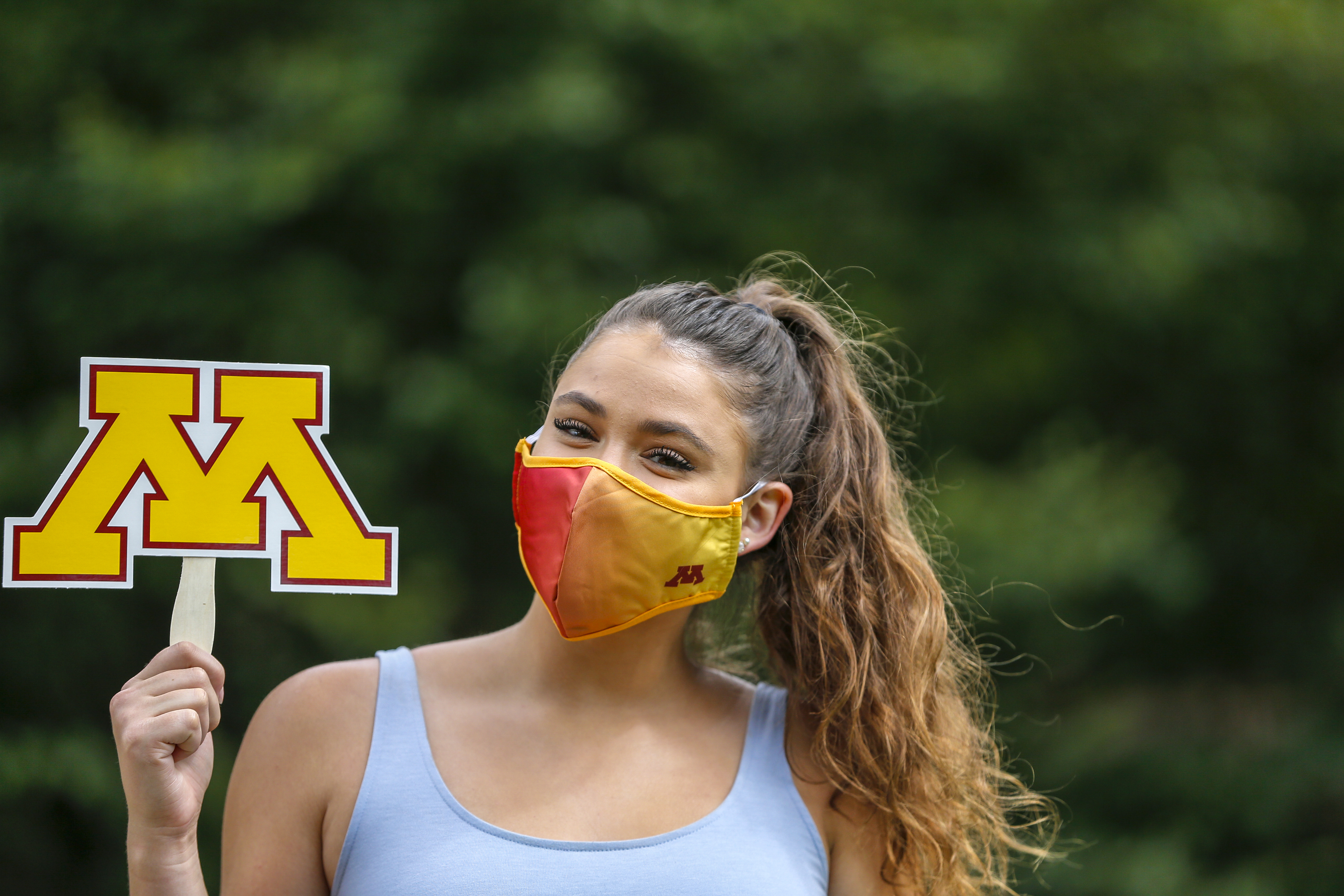Driven by the acute need for N95 masks in hospitals, faculty from the University of Minnesota’s College of Design, College of Science of Engineering, and medical school worked together to create two face mask designs that could be assembled using available materials.

While the innovative designs for the “MNmask” may be owed to the project’s leadership, much of the actual production of the masks came down to nearly 60 undergraduate and graduate student volunteers across the University.
For three weeks, the second floor of McNeal Hall on St. Paul campus was carefully segmented, taped off, and sanitized to facilitate a coordinated assembly line of students dedicated to the cause.
Colleen Pokorny (Apparel Studies), a research assistant in the Human Dimensioning Lab, played a significant role in devising the effort’s layout, capacity, and safety measures. “This included everything from mapping out physical locations of production steps, working through supplies required, timing production steps to determine capacity, putting together training materials, and considering how to implement social distancing,” Pokorny described.
Volunteer safety remained the top priority throughout the process. Beyond hand sanitizer and sanitizing spray, each student was provided PPE and assigned a bathroom stall at the beginning of each shift, with lunch breaks staggered to minimize gatherings. Production rooms hosted no more than five work stations at a maximum distance from one another, and designated drop points were used between rooms to keep the masks moving through various stages of production without direct contact.
Even with all of the precautions, the students were aware that they were still taking a risk each time they entered the building.
Anna Marie Mitchell (Product Design), carefully weighed the potential danger against her urge to participate. “I think I was one of many students who were getting frustrated with sitting at home, absorbing a constant stream of terrible news without much outlet. I felt like getting involved would be a real, tangible thing I could do to help in some small way,” reflected Mitchell.
Beyond contributing to the cause, Mitchell recalled the basic comfort of company—even at a distance. “As simple as it is,” she explained, “one of the best parts of this job has been the ability to talk to other people in real life. Ultimately, the steps we’re taking to keep ourselves safe around each other aren’t that difficult to get used to or time-consuming to execute. It’s really made me think about how I can keep myself safe for my own sake, and for the sake of people I don’t know.”
But the learning experience didn’t stop there according to another student involved with the project. Kai Johnson (B.S. ’20, Apparel Design) appreciated seeing the development of the masks from prototyping to final product and how the theories of design and production are translated into a full-scale manufacturing process. “I think the most memorable experience was seeing all of the masks in one room on the last production day. It’s difficult to see how much work is getting done when you’re only handling one batch of masks at a time.”
With production closed and 5,000 fresh masks ready for the front lines, the students have every right to feel proud. “It’s been amazing to see how much support there is for this project across the University,” concluded Pokorny.
The need for N95 masks has skyrocketed in recent weeks in response to COVID-19. To address this challenge, an interdisciplinary research team at the University of Minnesota Twin Cities has designed two respirator mask prototypes from donated filter material by Cummins and bendable components from Bedford Industries.
The scarcity of N95 masks has occupied headlines and the minds of the public since the outbreak of COVID-19—hoarders of the masks have been busted, stockpiles have been donated, and several alternatives have been developed.
The following is a guest post written by Associate Vice Provost in the Office for Equity and Diversity and CSBR Senior Research Fellow Virajita Singh.





